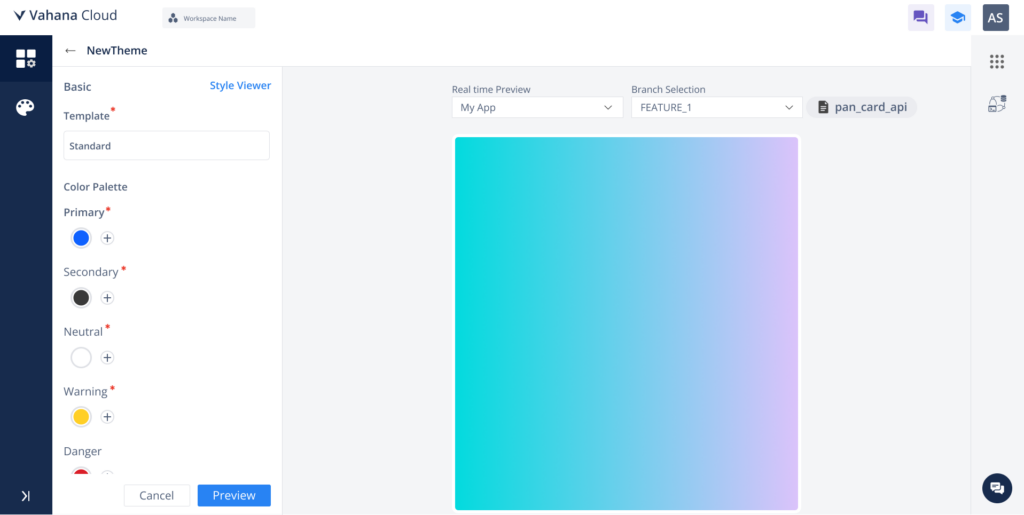Traditionally, designers envisioned a user interface, and developers translated that into reality. This often hindered efficient collaboration. But you can decode them with No-Code. It bridges the gap between design and development, empowering designers to create applications with no knowledge of coding. Therefore, navigating UI/UX hurdles first and then moving on to the solutions.
Table of Contents
ToggleIn this blog, we will examine UI/UX challenges and how no code can help to overcome these roadblocks.
Let’s get started!
Challenges Faced by UI/UX Designers
Communication Gap
Designers make the product appealing and aesthetic as per the client’s needs. The problem arises when developers fail to envision that idea into reality. This disconnect between design and development often leads to misunderstandings and delays in product submission.
We are all familiar with this quote First impression is the last impression. Similarly, as per research, design drives 94% of users’ initial perception of a website.

Time Restrictions
We live in a competitive world where customers want delivery of their product at its earliest. It helps them to formulate strategies and launch their product with the new updates in the market.
With tight deadlines and budget constraints, most developers and designers work under pressure. It negatively affects their work and creativity. Moreover, this also impacts user experience and product quality.
Testing Errors
We all know that developing a product through coding takes a lot of time, implying late testing. Additionally, if the user needs some changes or there are some errors, it would take another few weeks.
Consistency over platforms
Each operating system such as IOS, Android, etc. has different functionality and designs. This forces developers to rewrite or adapt components for each of them. Besides, updating UI elements and functionalities across multiple codebases becomes a tedious and error-prone task.
Lack of coding knowledge
Building applications is exclusive to the people who know coding. Besides, developers have to do a lot of iterations and changes as per the client’s feedback. It can be overwhelming, as for even a minor change, a lot has to be done at the back end.
This also makes it difficult for the designers, since they have to learn numerous programming languages.
Now to think about the solution, no code is the perfect way to overcome these obstacles. Let’s see how no code can drive a satisfactory user experience and dust off the challenges.
Navigating UI/UX Hurdles Effortlessly with No-Code
As we all know, the benefits of no code/low code are noteworthy, and most enterprises are leveraging this tool to make their life easier. But what role does it play when we think about the hurdles UI/UX faces?
Earlier, we talked about how there is a gap between design and development. Well, no code acts as a unifying force, breaking the barriers between both parties. You heard it right! Let’s take a deeper dive into how you can decode UI/UX challenges with no code.
Drag and Drop Features
Well, its visually driven drag-and-drop features allow people to create and deploy an app with no knowledge of coding. Simply put, you can grab whatever buttons, tasks, or date picker of your choice from the numerous options available on your canvas.
Yes, that’s how easy it becomes to build applications.
What you see is what you get (WYSIWYG)
You can preview the design you are creating in real time. The visualization process becomes easy, and you can see if the outcome meets your expectations.
Rapid Prototyping
No code allows designers to quickly test and iterate. It reduces the risk of rework later in the development process. Developers can work on the backend while designers on the front end, ensuring that the client receives what they need, enhancing their experience.
Themes and Style module
With coding, for every page’s theme, you have to start from scratch. On the contrary, with no code, designers have to build a template once, which can then be copied on every page. Sounds easy right?
Additionally, primary and secondary colors and margins can easily be copied on every page, reducing the dependency on developers.
Website Responsiveness
No code simplifies the process of creating responsive websites that fit various screen sizes and devices. This improves usability and user satisfaction along with easy maintenance. You just have to update it once, and it will be reflected on all the platforms simultaneously.
Pre-Built Templates
There are a plethora of customizable elements and templates, for instance, headers, footers, and navigation drawers, so you can easily configure components for your canvas. These are pre-built that give developers the ability to be as creative as they want to be.

Flexibility and scalability
No code platforms allow you to adapt to the changes with incredible ease, especially significant for medium-sized and large businesses to remain in this competitive world. With no code, you don’t require technical expertise to modify applications.
Just understand what your consumer wants and make their experience with the app smooth. You also have the advantage of tracking users’ journeys using analytics.
Benefits of Using No-code
Now comes the question if no code is the best solution for you. Take a look at its benefits.
Save Money and Time
No code helps with saving resources and time, since you do not have to spend a large sum of money to hire professional developers. Additionally, the application can be created in less time as compared to the traditional method of coding. This brings us to a faster GTM strategy.
Faster GTM
You can say farewell to months spent waiting for initial prototypes. No code overcomes these shortcomings. You can easily give clients a demo or Proof of Concept (POC) to show the output. Launching earlier also means getting user feedback sooner, allowing to pivot quickly if needed.
Scalable
With no code, you can easily scale the operation without additional costs. Furthermore, you can integrate third-party services and APIs with a single click.
Conclusion
Decoding UI/UX challenges with no code unlock a new era of rapid prototyping and agile development. No longer do they have to be dependent on developers and can build interactive prototypes, and experiment with themes and styles. This collaborative approach ensures that the final product aligns with user needs and expectations, resulting in a seamless user experience. As we say, Navigating UI/UX Hurdles Effortlessly with No-Code is the key to success.
Designers can implement their ideas, gather feedback, and iterate rapidly, while developers can contribute technical expertise. This no-code movement is empowering individuals and businesses to build engaging applications without writing a single line of code. Additionally, helping developers to decode UX/UI challenges with ease.
